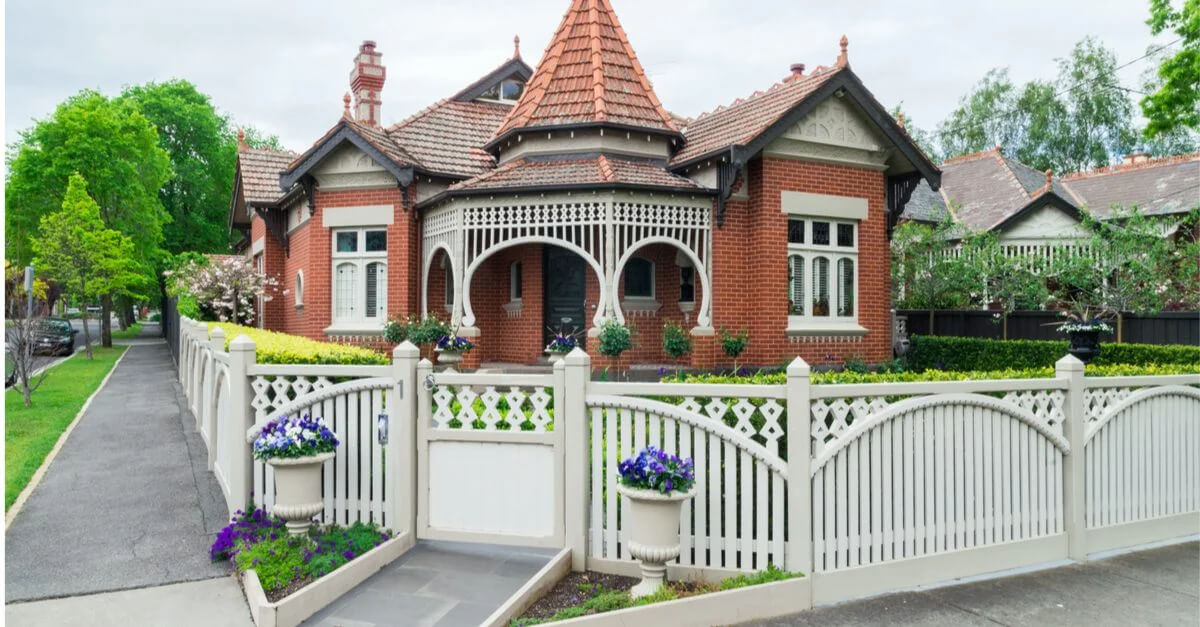In Canada, some insurance policies for heritage properties cover the cost of using traditional materials and methods for repairs! This means your historic home can stay true to its original charm while being fully protected. If you’re looking to own or care for heritage properties in Canada, you should know a few things. This guide provides valuable information for property owners, history enthusiasts, and anyone who wants to learn more about heritage conservation in Canada. It covers practical advice for maintenance and alterations, explains the heritage properties insurance implications of heritage designation, and outlines the restoration process.
Shall we dive right into the blog?
Formal Process: Heritage Designation

Heritage designation in Canada is a formal process that recognises and protects properties, landscapes, or sites with historical, cultural, or architectural significance. This status can be granted at the municipal, provincial, or federal levels, aiming to preserve the character of significant heritage resources.
Heritage designations can be applied to a wide range of entities, including:
-
- Buildings and Structures: Residential, commercial, industrial, or public buildings with architectural, historical, or cultural significance.
- Landscapes and Natural Features: Gardens, parks, landscapes, or natural features with historical or cultural importance.
- Monuments and Memorials: Structures, statues, or other monuments commemorating significant historical events or figures.
- Districts and Areas: Entire neighbourhoods or areas with distinct historical, cultural, or architectural characteristics.
Premiums for Property Insurance
A heritage designation on a property means it’s recognised for its historical or cultural value. This special status by itself doesn’t make heritage properties insurance more expensive. However, older buildings, which are often heritage properties, might have higher insurance costs. This is because they often have old electrical systems, heating units, and other features that heritage properties insurance companies can consider risks. Also, some insurers might not cover very old buildings at all. But it’s important to understand that these features and the building’s age might increase the insurance price, not the heritage title itself.
Property Destruction by Fire or Accident
The main goal of giving a property a heritage designation is to protect its historical and cultural importance. If a building on a heritage-listed property is badly damaged or destroyed, the law doesn’t force the owner to rebuild it exactly as it was, matching every historical detail. Instead, any new building that replaces it can have a different design. This means that while the heritage designation aims to preserve the property’s value, it also allows for flexibility in how it can be developed or rebuilt after damage.
Replacing Broken Heritage Elements
If you want your property to look the same as before in case it gets damaged, you need to have the right heritage properties insurance for that. How much you pay for insurance (the premium) and what the insurance covers will depend on a few things, like how old the building is, how well it’s made, and its current state. Just like when shopping for any type of insurance, it’s a good idea to look around and compare different insurance companies. This way, you can find the best price and service that fit your needs.
Replacement Cost Coverage
The heritage properties insurance that covers replacement costs for lost or damaged property does so without deducting depreciation—the gradual decline in value of the asset over time. If something happens to your property or belongings covered under this policy, the insurance company will pay the amount it would cost to buy new replacements at current prices.
For example, if a storm destroys your roof, replacement cost coverage would pay for a new roof at today’s prices, regardless of how old your previous roof was or what it would have been worth before the storm. This coverage ensures that you can replace your items or repair damages without paying out of pocket for the difference between the old value and the new cost. It’s especially beneficial for homeowners and property owners, providing a way to fully restore their property after a loss without financial setbacks from depreciation.
Legal Endorsement Protection
By-law endorsement coverage is an insurance policy addition that covers the extra costs associated with bringing a building up to current building codes after it has been damaged. Without By-Law Endorsement coverage, the property owner might have to pay out of pocket for the additional expenses required to comply with these current laws during the rebuilding process. This coverage is particularly important for owners of older properties, as building codes evolve over time and updating a damaged building to meet new standards can be costly. By including By-Law Endorsement in their insurance policy, property owners can protect themselves against these unexpected expenses, ensuring that their property will be rebuilt in compliance with the latest regulations without imposing a significant financial burden.
Value in Cash
An owner can choose heritage properties insurance that pays for what their property is worth today, considering its age and wear (‘actual cash value’). This insurance pays less than replacement cost coverage by subtracting depreciation from the amount needed to buy a new item. When setting up their insurance, the owner needs to talk to their insurance agent about how claims will be paid out. This conversation helps the owner understand exactly how much money they could receive if something bad, like a fire or storm, damages or destroys their building. Knowing this information ahead of time is crucial so there are no surprises during a stressful situation.
Return the Property to its Original State
In order to maintain the historical and architectural significance of a heritage property, restoring it to its original state requires a meticulous process. Here’s an overview of the steps involved:
-
- Research and Documentation: Gather historical documents, photographs, and existing architectural plans. This research helps understand the property’s original state and significant features.
- Assessment: Conduct a thorough assessment of the property’s current condition. Identify what aspects of the property need restoration, repair, or replacement to bring it back to its original appearance.
- Consultation with Heritage Professionals: Work with architects, conservators, and other professionals specialising in heritage properties. They can advise on restoration techniques sensitive to the building’s historical significance.
- Compliance with Heritage Regulations: Ensure the restoration plan complies with local, provincial, or federal heritage designation regulations. These regulations often require specific materials, techniques, and designs to preserve the property’s historical integrity.
- Developing a Restoration Plan: Develop a detailed restoration plan based on the assessment and consultations. This plan should outline the work needed, the materials and methods to be used, and the expected outcomes.
- Securing Approvals: Before starting any work, obtain necessary approvals from heritage boards or committees that oversee designated properties. This might involve presenting your restoration plan and demonstrating how it respects the property’s heritage values.
- Execution: Carry out the restoration work as per the approved plan. This could involve skilled craftsmanship in traditional techniques, sourcing period-appropriate materials, and sometimes integrating modern technologies that don’t detract from the historical appearance.
- Maintenance Plan: Establish a maintenance plan to preserve the property’s restored state after restoration. Regular maintenance helps prevent the need for significant restorations in the future and ensures the property retains its heritage value.
Heritage Property General Maintenance
When you have a heritage property, taking care of it involves some special rules. However, not all maintenance tasks need special heritage permissions. Here are examples of work that usually doesn’t need these extra steps:
-
- Painting the outside trim or details of the building.
- Fixing or changing an asphalt roof.
- Working on parts of the property that the heritage rules don’t specifically protect.
Alteration Decisions to Designated Heritage Property
When someone wants to change a heritage property, it’s usually up to the local city or town council to decide if they can proceed. In some cases, this decision-making job can be passed on to certain staff members in the municipality.
Here’s how it typically works:
-
- There’s often a special group called the Municipal Heritage Committee. Their job is to look at any requests to change a heritage property.
- The committee checks the plans and gives their thoughts and advice to the council and the staff. They help figure out how to make the wanted changes in a way that doesn’t ruin the property’s special historic features.
- The staff and committee members work together to provide guidance. They suggest how to make the changes properly to preserve the property’s historical aspects.
Conclusion
Owning or managing a heritage property in Canada is a responsibility that requires an understanding of the property’s cultural, historical, and architectural significance. Heritage properties serve as a link to the past, and preserving them is essential to maintaining the cultural heritage. However, managing such properties comes with its unique set of challenges, including heritage properties insurance and the need for maintenance and restoration. It is crucial to work collaboratively with local heritage committees, insurance providers, and preservation experts to ensure that these historic landmarks continue to tell their stories and contribute to Canada’s rich culture!
You May Also Read :
|
Guide To Heritage Homes in Canada |
|
|
How Easement Affect Property |
|
|
Know The Green Investment in Canada |
|
|
What is Property Survey in Canada |
Frequently Asked Questions (FAQs)
What are heritage properties?
Heritage properties are buildings, structures, or places recognised for their historical, cultural, or architectural significance.
What are the benefits of heritage designation in Ontario?
In Ontario, heritage designation safeguards historical properties, boosts community identity, and can increase property values.
What is an example of a heritage property?
An example is the Parliament Buildings in Ottawa, known for their architectural beauty and historical importance.
Why is heritage important in Canada?
Heritage is important in Canada for preserving national identity and educating future generations about the country's history.



































